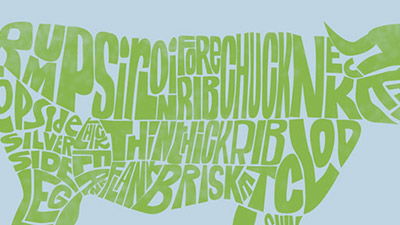
Garden of Eden
The garden of Eden was paradise on earth. It was there that mankind first inhabited the earth, where God placed Adam and Eve to live and instructed them to be fruitful and multiply.
Garden of Eden: Overview
The garden of Eden was perfect—a place without sin, death, or suffering—and was part of God’s good creation as described in Genesis 2–3. God placed Adam in the garden and gave him the responsibility to care for it and created Eve to be his helper. Sadly, it was in Eden that man rebelled against God, ushering in death and suffering.
Contents
- Was the Garden of Eden a Real Place?
- Where Was the Garden of Eden Located?
- Who Created the Garden of Eden?
- What Kind of Environment Was the Garden of Eden?
- The Tree of Life
- The Tree of the Knowledge of Good & Evil
- Who Was the Serpent?
- What Did the Serpent Look Like?
- What Was the Consequence of Adam and Eve’s Sin?
- Were There Dinosaurs in the Garden of Eden?
- Has the Garden of Eden Been Found?
Was the Garden of Eden a Real Place?
The garden of Eden was a real place, a perfect garden that God planted in his creation. We are given specific geographical context for the location of the garden of Eden in Genesis 2, which states that one river flowed out of it and divided to become four distinct rivers. This level of detail clearly indicates that this land of paradise was indeed a real garden that God created.
The garden of Eden was where mankind first lived. God placed Adam in the garden (Genesis 2:8) to cultivate and keep it (Genesis 2:15). It was also here that God brought animals to Adam to be named, and where God created Eve from the rib of Adam with the purpose of being his helper. There were two named trees found in the garden: the tree of life and the tree of the knowledge of good and evil.
Where Was the Garden of Eden Located?
The exact location of the garden of Eden remains a topic of intrigue and speculation among biblical scholars and researchers. The Bible indicates that the four rivers that flowed from the garden were named Pishon, Gihon, Tigris, and Euphrates (Genesis 2:10–14). While some have linked the two rivers we know today as the Tigris and Euphrates to the garden of Eden, they are not the same rivers noted in early Genesis.
These geographical markers could have once helped identify where God planted the garden, but the catastrophic event of the global flood of Noah’s day so dramatically altered the landscape that Eden was destroyed, along with the river that flowed through it to then form the four named rivers. After the flood, the earth was unrecognizable.
Who Created the Garden of Eden?
The garden of Eden was created by God—“And the Lord God planted a garden in Eden, in the east, and there he put the man whom he had formed” (Genesis 2:8). This verse explicitly states that God himself was the creator of the garden, designed as a perfect environment for the first humans, Adam and Eve.
God’s original, good design was that man would live in a perfect relationship with God, free from suffering and death. All God commanded was that Adam and Eve not eat the fruit from the tree of the knowledge of good and evil. When the serpent tempted Eve, both Adam and Eve chose to disobey God which brought disastrous consequences for all of creation.
What Kind of Environment Was the Garden of Eden?
There is quite a lot that can be gleaned from early Genesis as to the environment of the garden of Eden. We are told that a river flowed through it and watered the garden (Genesis 2:6, 10). Every tree was pleasing to the sight and good for food (Genesis 2:9), except for the tree of the knowledge of good and evil, the fruit of which Adam and Eve were commanded to not eat (Genesis 2:17). God fellowshipped there with Adam and Eve, who were created as his image bearers (Genesis 3:8), and Adam and Eve were innocent, not knowing evil until they disobeyed God’s command (Genesis 3:7–13, 22).
We also learn much about the garden of Eden from the curse that God placed on mankind and the earth after Adam and Eve disobeyed him. Prior to their disobedience, Adam and Eve had a peaceful relationship, there was no pain, caring for the garden was not burdensome work, and God provided for all their needs. The things that existed before and the things that were taken away after, all help paint the picture of the beautiful paradise that Adam and Eve enjoyed during the brief time they lived in the garden of Eden.
The Tree of Life
The tree of life, mentioned in Genesis, holds significant theological importance. This tree was one of two named trees located in the garden of Eden. The other named tree was the tree of the knowledge of good and evil. After Adam and Eve’s act of disobedience, access to the tree of life was barred, and they were expelled from Eden, symbolizing humanity’s loss of direct access to eternal life due to sin (Genesis 3:22–24).
The tree of life reappears in Revelation 22, where it symbolizes restoration and eternal life in the New Jerusalem, accessible to those who have placed their faith in Jesus Christ. This imagery underscores themes of redemption and the restoration of what was lost in Eden, emphasizing that through Christ, believers can once again partake in eternal life.
The Tree of the Knowledge of Good and Evil
The tree of the knowledge of good and evil was the second named tree located in the garden of Eden. While Adam and Eve could eat freely from any other tree in the garden, God specifically commanded them to not eat from this tree. But when the serpent appeared and tempted Eve, Adam and Eve chose to disobey God’s command and ate the fruit from the tree. In that act of defiance, sin and death entered the world, Adam and Eve were banished from the garden, and we have been living in a sin-cursed world ever since.
This tree’s significance extends beyond its literal interpretation. It represents the moment when humanity chose to rebel against God, leading to the loss of innocence and the need for redemption. The fall of Adam and Eve by eating the forbidden fruit from this tree is crucial to understanding human nature, the origin of sin, and God’s wonderful plan of salvation that unfolds through the rest of the Bible.
Who Was the Serpent?
Genesis does not explicitly name the serpent. Other biblical texts describe Satan as a deceiver and the “great dragon” who leads the world astray. Revelation 12:9 identifies the dragon as “that ancient serpent, who is called the devil and Satan, the deceiver of the whole world.” Satan worked through the serpent, a created physical creature, to deceive Eve.
The serpent’s craftiness in tempting Eve reveals to us the subtle ways in which evil can deceive and corrupt. This event sets the stage for the narrative throughout the rest of the Bible and God’s plan of salvation revealed in Genesis 3. It also provides the theological framework for understanding the nature of sin and the necessity of salvation through Jesus Christ.
What Did the Serpent Look Like?
When God cursed the serpent after the serpent deceived Eve, he stated, “On your belly you shall go, and dust you shall eat all the days of your life” (Genesis 3:14). This suggests a change in the serpent’s mode of movement from potentially upright or legged locomotion to crawling on its belly. While the Bible does not explicitly state that the serpent had legs, the divine curse implies a transformation from a previous condition, leading some to infer it might have had legs or a different form of movement before the fall.
This interpretation has practical and theological implications. Theologically, it signifies the direct impact of sin on creation, illustrating how the fall of man affected not just humanity but all nature. Practically, it raises questions about the physical characteristics of animals before and after the curse. While the idea of a legged serpent might seem speculative, it fits within a broader framework where animals could have been different in form or behavior before sin entered the world. However, whether or not the serpent had legs remains a point of theological speculation rather than a definitive fact.
What Was the Consequence of Adam and Eve’s Sin?
The first of mankind was the first to sin in the garden of Eden. Their act of disobeying God’s command to not eat from the tree of the knowledge of good and evil ushered in death and suffering for all of creation and marked the beginning of sin in the world.
The aftermath of this sin resulted in God’s judgment, where both Adam and Eve faced curses affecting their relationship with each other, the ground from which they would toil for food, and their eventual return to dust. This act of sin had the profound consequence of bringing sin and death for all of humanity and set the stage for the redemption of mankind, highlighting our need for a savior to restore the broken relationship with God.
God in his goodness and mercy made a way for us to be set free from the consequences of sin and to enjoy eternal life with him. The Bible tells us that God is patient and desires for all to come to repentance and a saving faith (2 Peter 3:9). God’s Word also tells us that “if you confess with your mouth that Jesus is Lord and believe in your heart that God raised him from the dead, you will be saved” (Romans 10:9).
Were There Dinosaurs in the Garden of Eden?
Dinosaurs were created on day six of creation, along with all land animals (Genesis 1:24–25). God’s Word also tells us that God made people on the same day (Genesis 1:26–28). While the Bible does not specifically mention dinosaurs (the word dinosaur being a modern English term), dinosaurs could fit in the creation week categories of behemah (the creature called behemoth in Job 40 literally means “beast of beasts” and is from the same term), remes (specifically smaller dinosaurs), and in the general term hayto-erets (“living thing of the earth”).
Has the Garden of Eden Been Found?
Despite all the speculation over the centuries, no one has discovered or determined the location of the garden of Eden, and for good reason. While some lean on the geographical clues provided in the Bible as to where the garden might be located, such as the mention of four rivers—Pishon, Gihon, Tigris, and Euphrates—and the fact that there are still two rivers today that bear the names Tigris and Euphrates, it is impossible for them to be the same rivers mentioned in early Genesis.
The catastrophic global flood as detailed in Genesis 7 was so complete and so powerful that everything outside the ark, save for marine life, was destroyed. This event erased rivers and landscapes, and as the floodwaters receded, the earth’s geography was forever changed and still plainly bears the scars and evidence of the global flood today across our planet. The Tigris and Euphrates Rivers of early Genesis were gone forever, and the garden of Eden was destroyed.
Articles About Garden of Eden
-
April 1, 2025 from Answers Magazine
Why so much garden imagery in the Old Testament temple? A literal view of Genesis holds the answer.
-
Nov. 3, 2023 from Answers in Depth
Is Genesis 2:10–14 Describing Place Names in Moses’ Time or Adam’s?
-
July 17, 2020 from The New Answers Book 3
Most Bible commentaries state that the site of the Garden of Eden was in the Middle East, but what does Scripture actually tell us?
-
Book Chapter¿Dónde estaba ubicado el huerto del Edén?Jan. 20, 2020, pp. 13–16
¿Se ha preguntado alguna vez en dónde está localizado el huerto del Edén? En este artículo corto encontrará la respuesta.
-
Jan. 27, 2019 from Answers Magazine
Today many Christian leaders argue that the fossil record preceded Adam by millions of years.
-
Was the Garden of Eden Located in Iraq?Oct. 21, 2003
As a Christianity-defending ministry, Answers in Genesis is often engaged in dispelling widely held myths that run contrary to the teachings of Scripture, as well as good research.
-
Has the Garden of Eden ever been found?Jan. 25, 2001
Many Christians assume that the original garden was located somewhere in the Mesopotamian region where the modern Tigris and Euphrates rivers flow.
-
What About the Snake in the Garden of Eden?Jan. 21, 1998
This is a series of questions and answers concerning the snake in the garden of eden.
-
Magazine ArticleThe Tree of LifeJune 1, 1985, pp. 24–25
‘Did the Tree of Life mentioned in the book of Genesis, have power to impart immortality to mortal man, as might be deduced from Genesis 3:22?’
Recommended Resources

Answers in Genesis is an apologetics ministry, dedicated to helping Christians defend their faith and proclaim the good news of Jesus Christ.
- Customer Service 800.778.3390
- Available Monday–Friday | 9 AM–5 PM ET
- © 2026 Answers in Genesis






